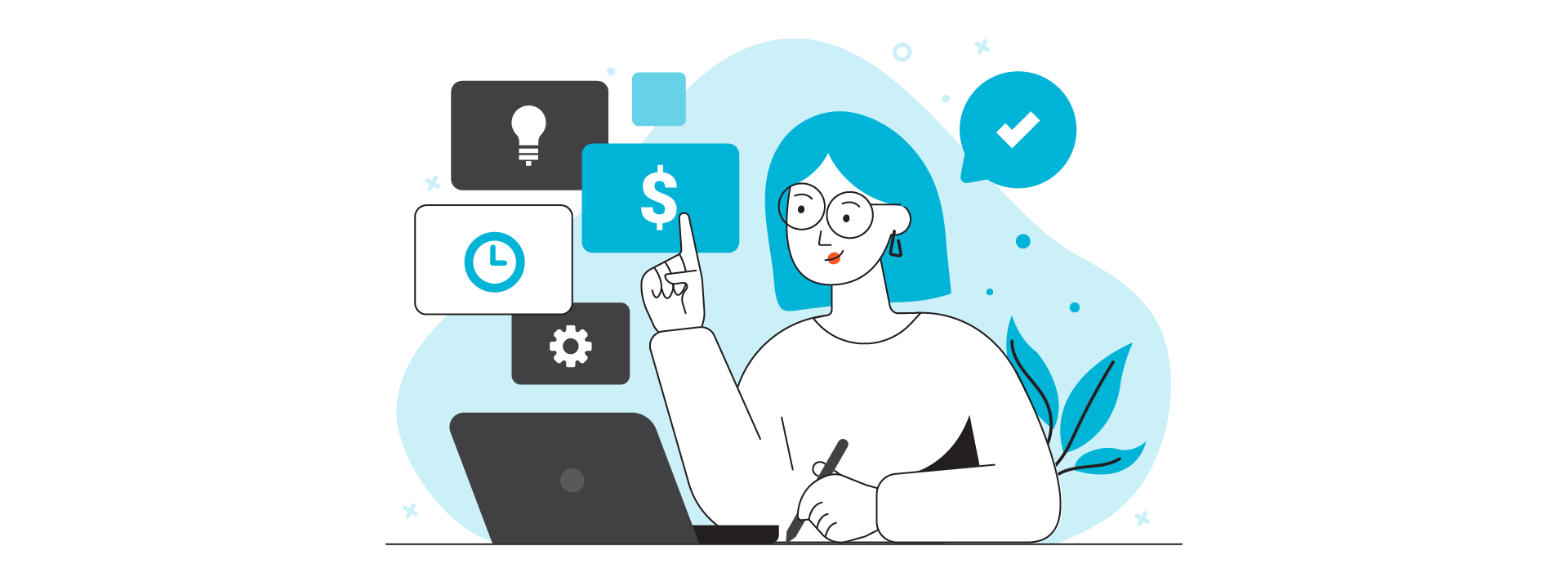Years ago, it seemed nobody thought that Kmart would shrink its operation so significantly, but today there are only a handful of Kmart retail locations left in the US. Why? Some would say it’s Walmart that killed Kmart, but plenty of older retailers like Target are still as strong as before. What really led Kmart to close thousands of locations was their lack of adaptability.
The company failed to adapt to the changing consumer market and was subsequently pushed out. There probably wasn’t a way to tell exactly what was going to happen with the market, but surviving isn’t about telling the future. It’s about having the will and the ability to change strategy in response to external changes.
That’s why it’s imperative to future-proof your company. In other words, improve it in a way that allows the whole organization to pivot in response to change, whatever those changes may be.
Future-proofing an organization is a lengthy process, but it starts with seven core principles:
- Strategic flexibility
- Monitor new solutions
- Build employee loyalty
- Encourage remote work systems
- Handle data early on
- Automate routine tasks
- Invest in scalable tools
Keep reading to understand each of these 7 principles in-depth.
Strategic flexibility
The most important thing you can do for future-proofing your organization is to develop strategic flexibility. Companies that have grown large enough to be riddled with bureaucracy often take a lot of time to implement change.

Plans become fixed instructions to follow, not instruments to achieve goals. Employee initiative is either ignored or discouraged. Any improvements that are implemented are done so on a tactical, not strategic level.
This means if sales are dwindling, the organization will either try to do more of the same or implement incremental changes. It won’t even consider whether the strategy it follows needs to be changed or discarded — it’s set in stone.
To counter that, you need to build a strategically flexible organization. One way to do this is to build what McKinsey calls a helix organization. That’s an organization that doesn’t have a single decision-making role but instead has several, each having the authority in one of the crucial business areas.
If that doesn’t fit your organization, the least you can do is rework your decision-making workflows to make rapid and strategic change possible.
Monitor new solutions
The next thing a future-proofed organization has to adopt is the understanding that every new strategy is just an experiment. Even the brightest visionary cannot know for certain what works and what doesn’t.
Being open to change and coming up with new ideas is an important step, but it’s only a part of the future-proofing process. Each strategy that your organization implements needs to come with a clear set of KPIs that can be monitored.
Don’t take success for granted. Instead, monitor every aspect of the new strategies, and change them if they’re underperforming.
Build employee loyalty
An organization is made of people, so if you want to future-proof it, you’ll need to make sure that top talent stays with you. The risks of seeing a resignation from a key person in a company are rather high as 6 out of 10 people under 30 consider job-hopping a great opportunity (Source: Zippia).
For people in lower roles, job-hopping is inevitable since not every organization has the ability to offer constant career growth. But when your key manager or decision-maker leaves, this can lead to problems within the organization.

Not only does a typical hire cost upwards of $4,000, but losing valuable time and a unique perspective of a key person in an organization can lead to losses in your bottom line. This means building employee loyalty is a priority for future-proofing.
According to a Gallup poll, organizations need to focus on the following three strategies to avoid having to deal with resignations:
- Prioritizing employee wellbeing
- Having robust ethics
- Making leadership more transparent
Encourage remote work systems
Employee wellbeing is improved by providing more benefits — monetary, social, medical, and mental. It’s also about giving employees the flexibility to work in a way that suits them best. This trend had been developing even before 2020, but the future of work after covid is definitely remote.
After millions in the workforce have tried remote work, 53% are now set on switching to hybrid. Giving your employees the option to work from the office or from home is going to be a major benefit for more than half of the workforce.
The future of remote working lies in adopting new management strategies and using the right tools. Remote work calling platforms like Kixie make it possible to manage your team, whether they’re in the office, at home, or across the Atlantic. With simple integrations, you can create a custom work environment that connects Slack for communications, HubSpot for relationship management, and Kixie for sales.
Handle data early on
The best decisions are those that are based on robust, real-world data. Not having sufficient access to data means you’re missing out.
That’s why one of the major steps in making your organization future-proof is creating a flexible and scalable infrastructure for data early on. Most data storage and analytics tools allow you to scale as your needs grow. The future of remote work means supporting an on-premise database isn’t a viable option, so consider using the cloud. It’s more flexible, too, as users don’t have to worry about digital clutter on their devices.
Start gathering historical data for further analysis now, and you won’t regret your lack of decisiveness in five years.

Automate routine tasks
Automation and the future of work are closely tied. Automation is cost-effective, and 56% of consumers are totally okay with it. But saving money is just a small part of the equation. What’s more important is that automating routine tasks frees up your organization’s brainpower to generate new ideas and improve strategies.
Many communications in marketing and sales can be automated. For example, Kixie can automate both calls and texts and sync them with your existing CRM platform.
Invest in scalable tools
This point can be considered minor compared to the more strategic initiatives, but don’t underestimate how important your tools are. In a moment of growth and ideation, you don’t want the tools you’re using to be a bottleneck for the entire system.
Find tools that are reliable, easily integrated, and that can be scaled fast when the time comes. This will ensure small details don’t interfere with rapid structural changes in the organization.
Future-proofing is preparing for change
A future-proofed organization is not one that knows exactly what’s coming, but one that looks out for trends and is eager to implement change when it’s needed. Take the seven tips above into consideration, and your organization is going to be on the correct path.



